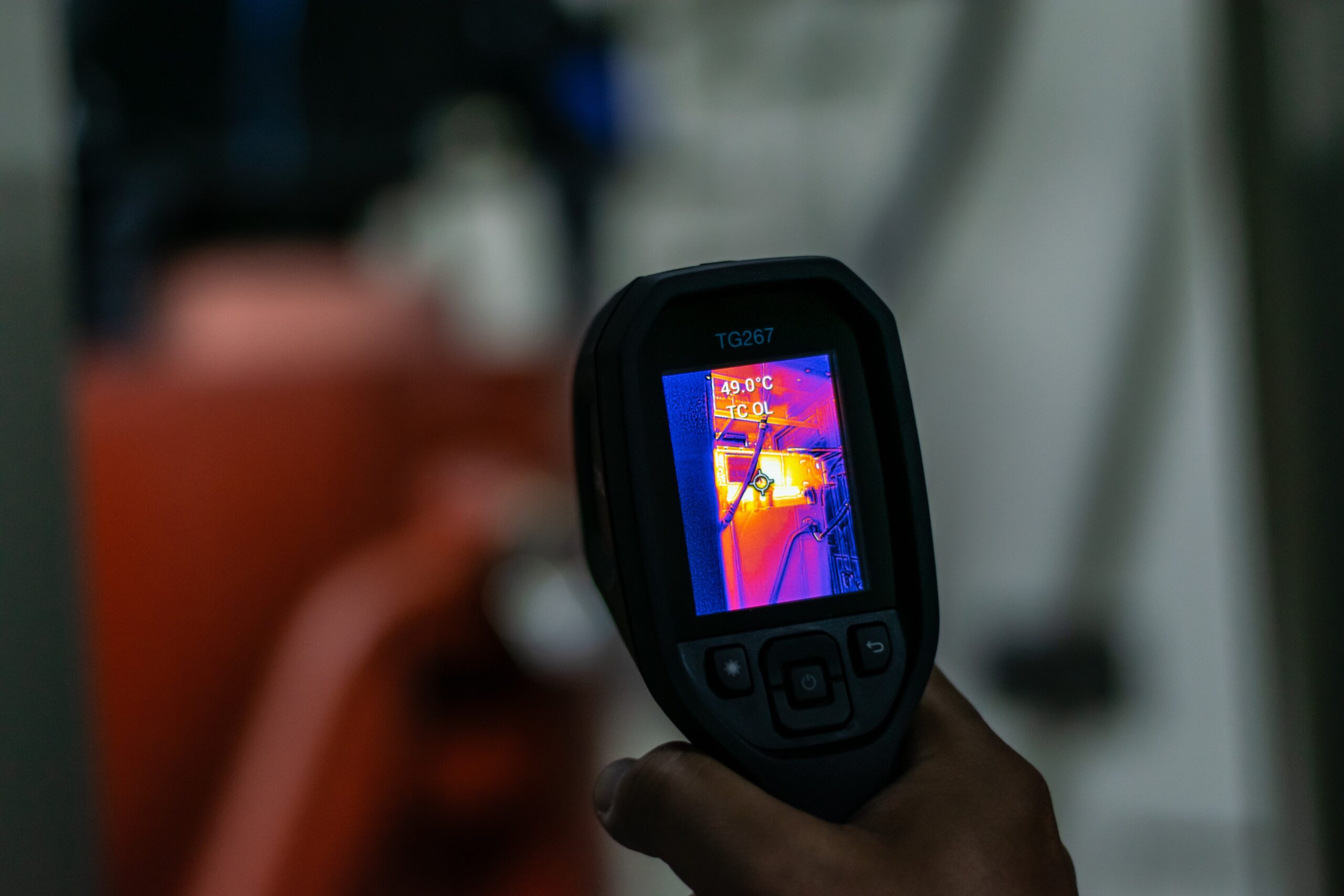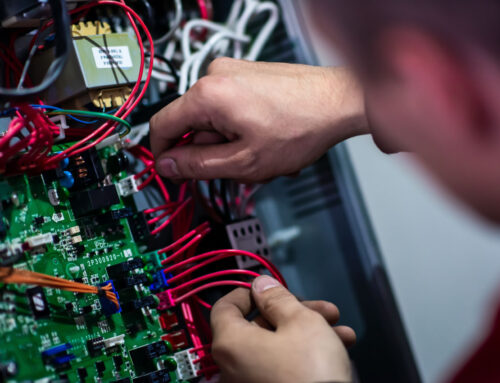Infrared Scanning, which is also known as infrared thermography, of electrical installations comes under Predictive Maintenance Fault Finding. The main importance of infrared thermography is that it helps in predicting an electrical fault before an element fails.
What is infrared scanning?
Infrared scanning is referred to as the process of using a thermal imaging device to detect heat coming from an object, converting it to a temperature and displaying an image of the temperature distribution on the object. The primary goal of infrared scanning is to confirm machinery is running normally and to detect abnormal heat patterns within a machine, indicating inefficiency and defects. The infrared images of the temperature distribution are known as thermograms. They make it possible to see heat-producing objects which are invisible to the naked eye. Infrared scanning detects the build-up of heat from any electrical element under stress and predicts whether the equipment will fail or not even though it appears quite normal to the naked eye. The heat signature is identified with the use of an Infrared camera. The pictures are then analyzed and put into an easy-to-follow report for the industrial electricians. Then the industrial electricians can rectify before a breakdown occurs, preventing loss of production due to unplanned downtime.
How does infrared scanning work?
Infrared thermography or thermal imaging is a condition monitoring technique that measures the radiant heat pattern emitted from a body, such as building structures or plant equipment. Infrared scanning identifies the transfer of infrared heat radiation from an object or equipment. It provides the means to scan the thermal emissions of various surfaces and display an image of temperature distribution. Infrared scanning of electrical equipment can determine regions or points of increased or reduced heat emissions, which can indicate the presence of a fault in the body.
What is infrared thermography used for?
Infrared thermography is commonly used in a variety of industries and applications including:
- Machine condition monitoring
- Building diagnostics like moisture, roof and energy-loss inspections
- Medical imaging including peripheral vascular disease, thyroid abnormalities, and metabolic and inflammatory condition monitoring
- Law enforcement and security imaging
- Chemical imaging
- Earth science imaging
- Electrical system monitoring
- Fluid system monitoring
Thermal imaging is also used in plant maintenance and condition monitoring, such as:
- Monitoring the electrical and mechanical conditions of a motor
- Bearing inspections (abnormal bearing friction)
- Monitoring refractory insulation
- Locating gas, liquids and sludge levels
Now, how often should infrared testing be done? In general, an infrared inspection should be conducted on electrical equipment on an annual basis.
However, the frequency at which infrared inspections should be conducted depends on the type of operations, environmental conditions, the importance of the equipment, electrical current load and the age of the electrical equipment.
The Benefits of Thermal Imaging Over Other Inspection Methods
Thermal imaging offers distinct advantages over traditional inspection methods, making it a preferred choice in various industries. One of the key benefits lies in its ability to detect and visualize temperature differences, allowing for the identification of potential issues before they escalate.
Unlike visual inspections, thermal imaging works effectively in low-light conditions and can penetrate smoke, dust, and certain materials, ensuring a comprehensive assessment of hidden anomalies. Additionally, thermal imaging enables swift inspections as it doesn’t require physical contact with the object under scrutiny. This non-contact approach not only enhances safety but also prevents potential damage to delicate or hazardous materials. Furthermore, the technology provides a real-time assessment, facilitating prompt decision-making and preventive measures. The versatility of thermal imaging makes it indispensable in fields such as electrical, mechanical, and building inspections, offering a valuable tool for predictive maintenance and ensuring the longevity and efficiency of critical assets.
—
Looking for industrial electricians to perform infrared scanning for your plant or equipment? Contact your local industrial electrical and automation experts at RBT. We will keep your company running with full-service electrical and automation.







